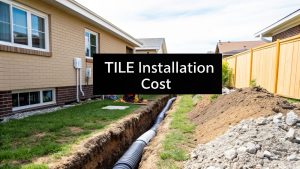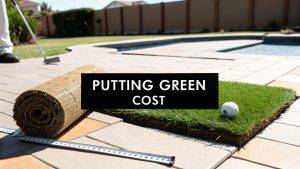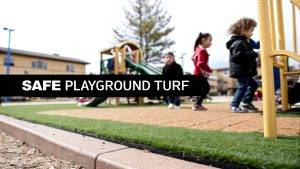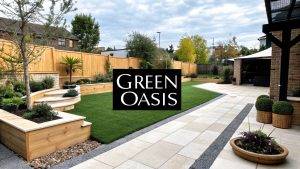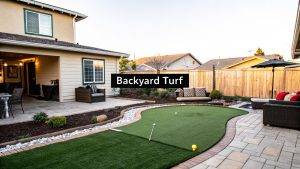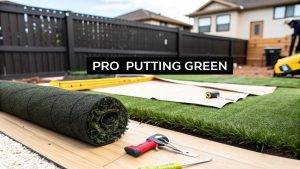When you start seeing water pooling in your yard or, even worse, creeping into your basement, the first question that pops into your head is usually, "How much is this going to cost me?" It's a fair question, and getting a straight, honest answer is the first step toward finding a lasting solution.
The national average for a drainage tile installation hovers around $4,615. But that's just a number. A simple, targeted fix might only set you back $800, while a full-blown, property-wide system designed to tackle serious water issues can climb upwards of $15,000.
Understanding Your Drainage Tile Installation Cost
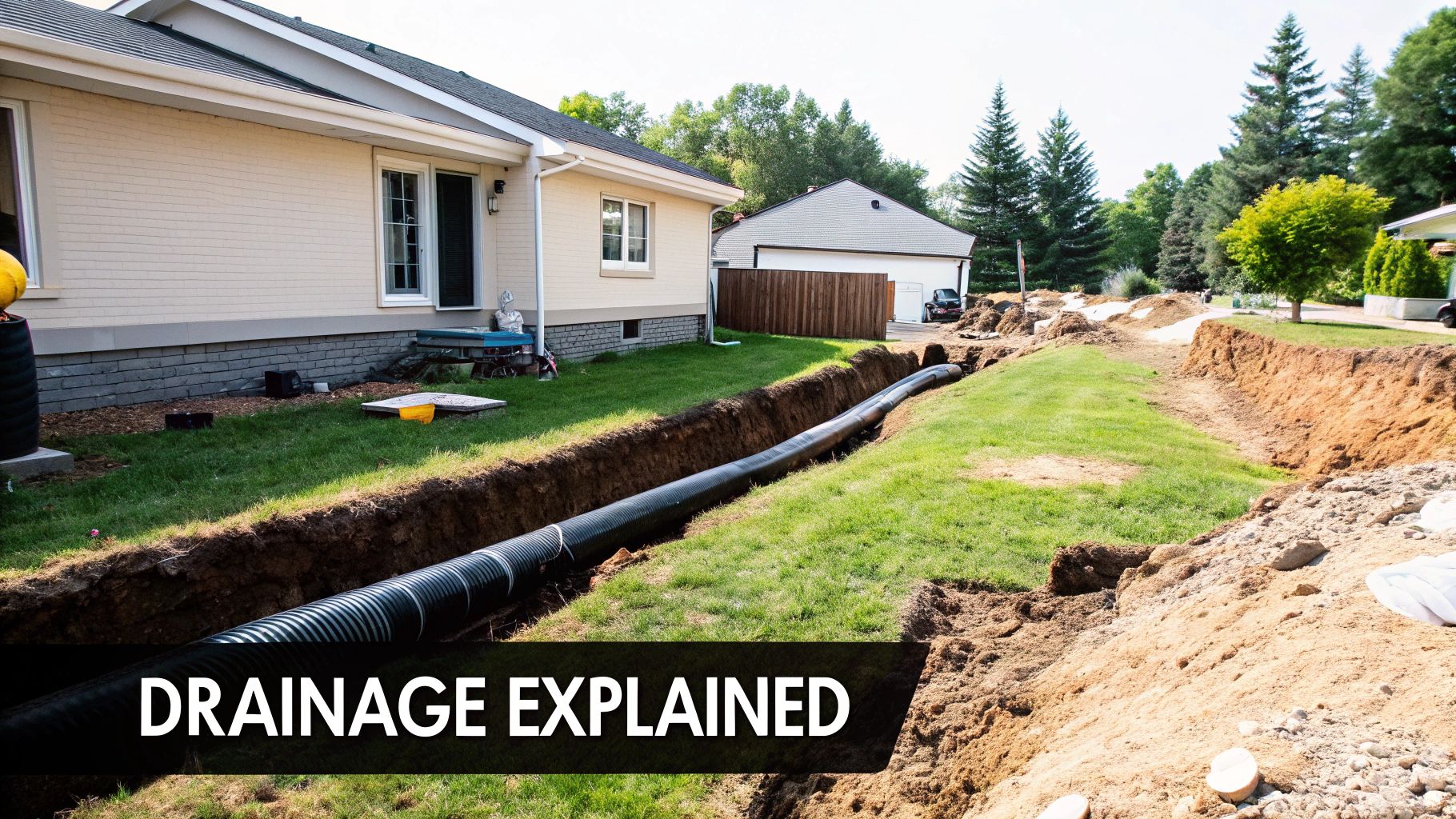
Trying to pin down a single price for a drainage system without a professional on-site evaluation is a bit like asking for the cost of a car—are we talking about a basic sedan or a luxury SUV? The specifics make all the difference, and you deserve a quote tailored to your property, not a generic guess.
This guide is here to give you an honest, real-world look at what you can expect to invest in a professional drainage installation. We believe in empowering you with clear information. We'll break down the moving parts so you can understand where your money is going and feel confident in your decision to solve your water problem for good.
A Ballpark Estimate to Get You Started
Every property has its own unique layout and challenges, but looking at typical price ranges is a great way to set realistic expectations. Different drainage systems are engineered to solve different headaches, from constantly soggy lawns to driveways that turn into rivers every time it rains.
To give you a clearer picture, here’s a quick overview of what you might expect to pay for some of the most common residential drainage solutions we install.
Estimated Cost for Common Residential Drainage Systems
| Drainage System Type | Average Cost Range | Best For |
|---|---|---|
| Exterior French Drain | $2,000 – $10,000 | Tackling widespread yard sogginess and protecting your home's foundation from surface water. |
| Interior French Drain | $4,000 – $15,000 | Keeping basements and crawl spaces bone-dry by intercepting water before it can get in. |
| Channel Drain | $1,500 – $5,000 | Quickly clearing water from hard surfaces like driveways, patios, and pool decks. |
| Dry Well System | $1,500 – $6,000 | Collecting runoff from gutters and other drainage lines and letting it slowly soak back into the ground. |
This table should give you a solid starting point for understanding the potential investment.
The crucial thing to remember is that these numbers are estimates. A professional on-site assessment is the only way to get a firm, accurate quote tailored to your property’s specific needs.
Ultimately, our goal isn't just to stick a drain in the ground; it's to provide a permanent solution to your water problem. The cost to install these systems varies widely based on the scale of the job and the type of drain needed. For more pricing insights, you can explore resources like the landscape drainage cost guide on Angi.com.
What Really Drives the Final Cost?
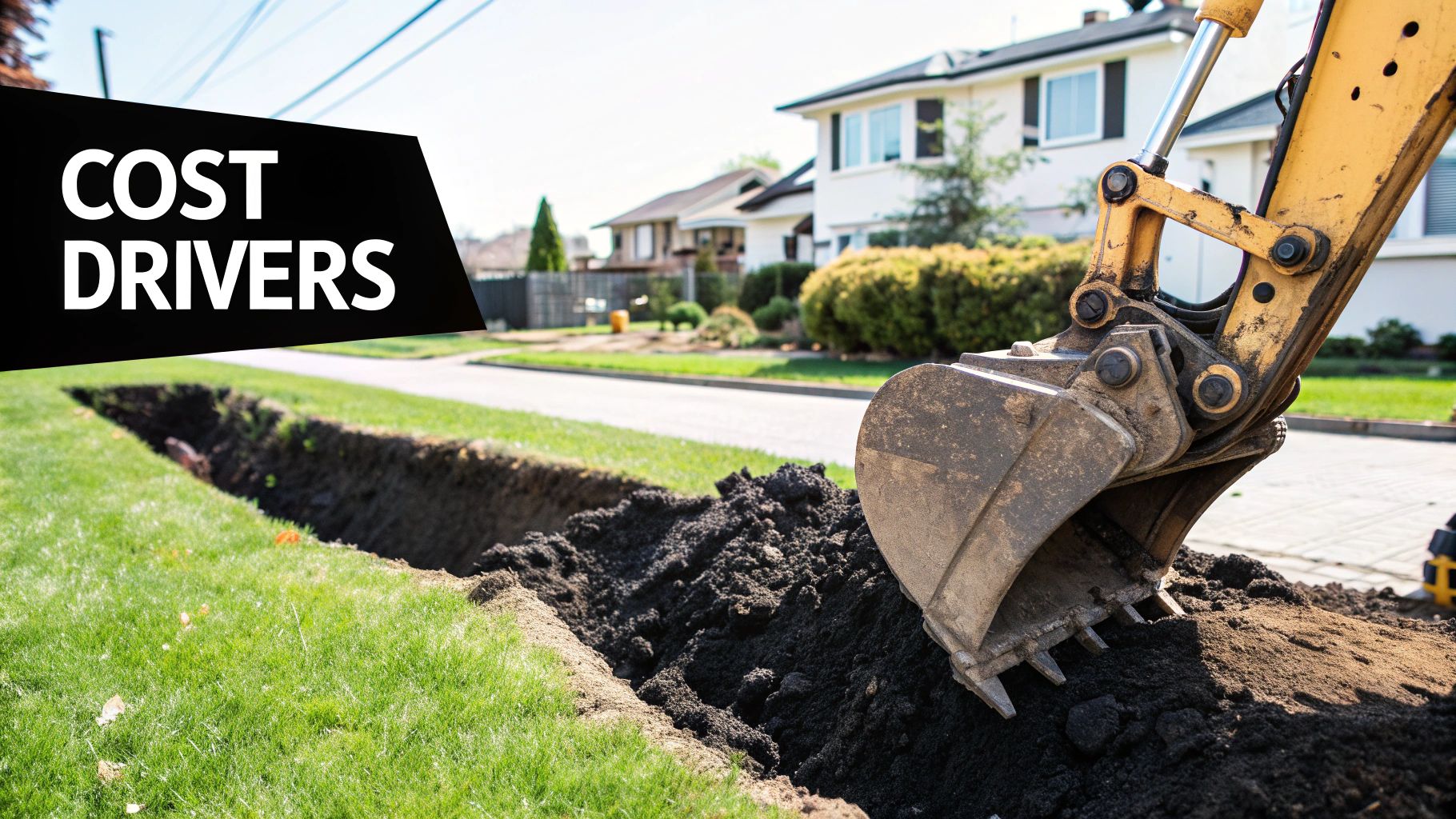
When a homeowner asks us for the cost of a drainage system, the only honest answer we can give is, "Well, it depends." Think of it like a custom-built deck—the final price isn't just pulled from a catalog. It’s a unique figure shaped by the specific challenges and layout of your property.
Understanding these variables is the first step to seeing where your investment goes and why a custom solution is so important. It shows you why our on-site evaluation isn't just a suggestion; it's the only responsible way to provide a solid, accurate quote that will solve your water problem for good.
The Scope and Size of the Project
The most direct factor affecting your drainage tile installation cost is simple: how big does the system need to be? A longer, wider drainage trench requires more pipe, more gravel, and more time to dig. It's just a matter of scale.
A short, 50-foot French drain to dry out a single soggy corner of your yard is a completely different project than a 200-foot system engineered to protect your home's entire foundation. The relationship is straightforward—the more ground we have to cover, the more involved the job becomes.
Our professional assessment measures the exact length needed and maps out the most efficient path for the drain. This ensures you only pay for what’s absolutely necessary to fix the issue permanently.
Soil Composition and Ground Conditions
Believe it or not, what's hiding under your grass plays a massive role in the final price. Digging a trench in soft, loamy soil is one thing. But battling dense clay or rocky ground is a whole different ball game.
- Heavy Clay Soil: This stuff is tough. It’s compact and stubborn, often demanding more powerful equipment and more hours of labor to excavate properly.
- Rocky Ground: Hitting large rocks or underground ledges can bring a project to a screeching halt. It can require specialized tools to break through or remove the obstructions, adding time and complexity.
- Loose, Sandy Soil: While it's certainly easier to dig, sandy soil loves to collapse. This means the trench might need extra shoring and reinforcement during installation to keep our team safe and ensure the system is built right.
Property Access and Existing Obstacles
Finally, how easily can our team and equipment get to the work site? This directly impacts labor costs. An open, flat backyard with a straight shot from the street is the dream scenario.
Of course, the real world is rarely that simple. Many properties have hurdles that demand more time and careful maneuvering. Things like fences with narrow gates, delicate garden beds, sprawling tree roots, concrete patios, or buried utility lines can all complicate the excavation. Working around these obstacles requires a delicate touch and extra labor, which naturally gets factored into the quote.
This is exactly why having our experts on-site is so critical. When you’re ready for a custom solution designed for your yard's unique challenges, you can learn more about our professional drainage tile installation services and schedule your no-obligation consultation.
A Clear Breakdown of Labor and Material Costs
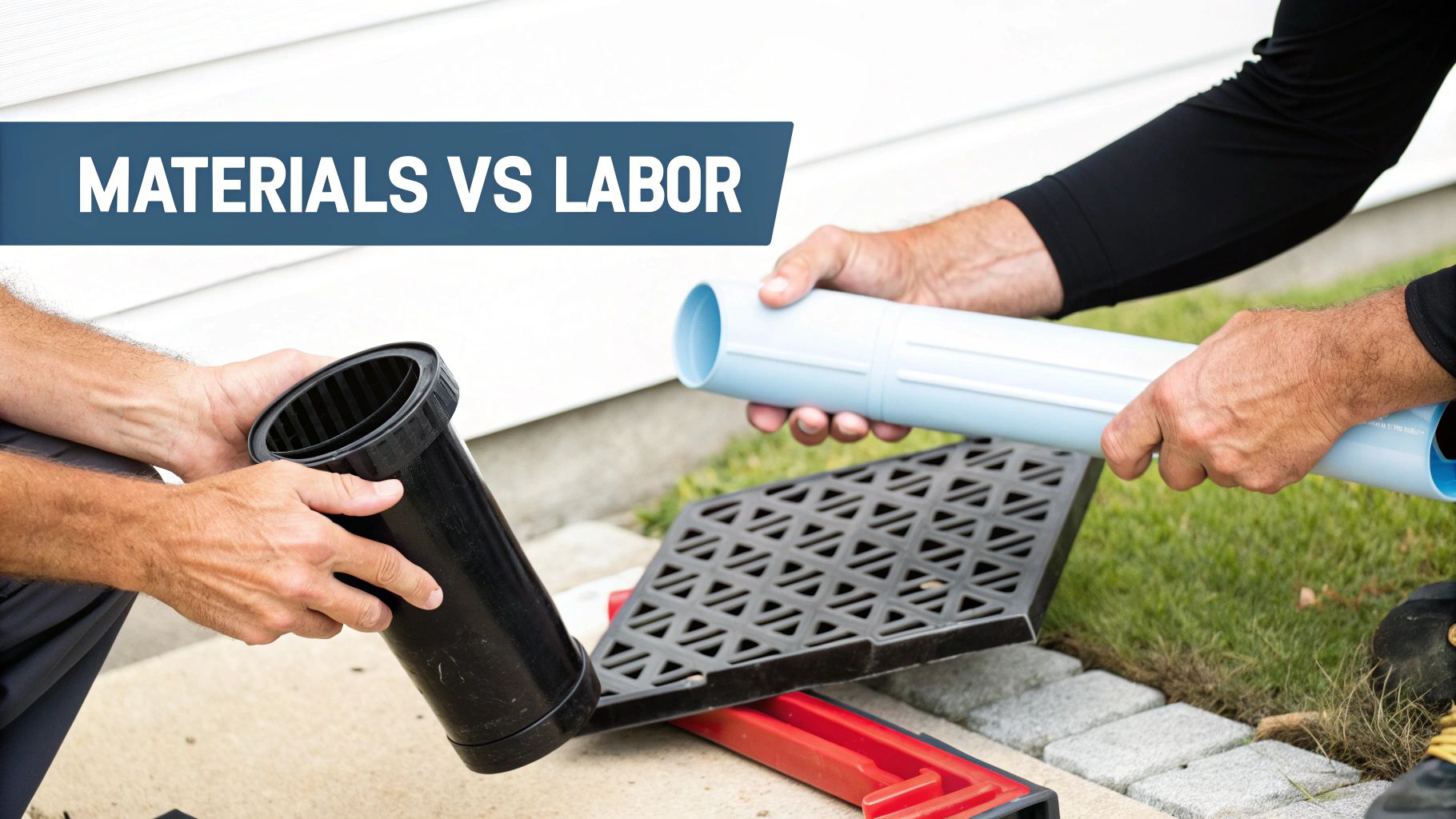
When you're investing in a project to protect your home, you deserve to know exactly what you’re paying for. So let's pull back the curtain on the drainage tile installation cost and look at the two core components: the high-quality materials we use and the expert labor needed to put them together.
This isn't just about digging a ditch. Think of it as a small-scale civil engineering project designed to safeguard your biggest asset. Understanding where every dollar goes helps you see the real value in a professional installation—one that’s built to last for decades, not just until the next big storm.
The Building Blocks of a Durable System
The materials are the foundation of any long-lasting drainage solution. Cutting corners here with cheap alternatives is a recipe for clogs, collapses, and a system that fails you when you need it most. We only use components that have proven they can stand the test of time and relentless moisture.
Your material investment typically covers:
- Perforated PVC Pipe: We use durable, rigid PVC, not the flimsy, black corrugated pipe you see at big box stores. Its smooth interior walls and precisely drilled holes ensure water flows freely and the pipe stays clear of roots and debris that can crush or clog cheaper options.
- Clean Drainage Gravel: This is more than just a pile of rocks. We use specific sizes of washed gravel to create a super-porous layer around the pipe. This allows water to flood into the system quickly while also providing crucial support to keep the weight of the soil from crushing the pipe.
- Protective Filter Fabric: This non-woven geotextile fabric is the system’s unsung hero. We wrap it around the entire gravel bed, creating a final line of defense that stops fine silt and clay from slowly sneaking in and choking your drain over time.
The Craftsmanship Behind the Installation
The second—and equally critical—part of your investment is the labor. This is where our team's expertise and a meticulous eye for detail transform a pile of quality materials into a high-performance drainage system.
Our team's time on the job is dedicated to executing each step with precision.
- Precise Excavation and Grading: We don't just dig a trench. We excavate to the exact depth and width needed, ensuring a perfect, consistent slope. This lets gravity do all the work, effortlessly carrying water away from your foundation.
- Meticulous System Assembly: Our crew carefully lays the pipe, surrounds it with the correct volume of gravel, and wraps the entire trench in filter fabric. It’s a process that creates a sealed, protected drainage channel.
- Thorough Site Cleanup and Restoration: Once the system is installed and tested, we don't just walk away. We backfill the trench, compact the soil properly to prevent it from sinking later, and leave your property looking its best. Our job isn't done until you're happy.
A proper installation is an investment in craftsmanship. It’s the difference between a temporary fix and a permanent solution that gives you peace of mind every time it rains.
From what we see in the industry, installation rates often land between $30 to $40 per linear foot. Keep in mind that significant prep work, like major soil grading or heavy excavation, can add to that final figure. The same goes for restoring intricate landscaping after the job is done. To get a better feel for these variables, you can find more detail in this helpful guide on Angi.com.
Once your lawn is protected from water damage, you might start thinking about other ways to create a beautiful, low-maintenance yard. It can be worth exploring the cost of artificial turf as another long-term investment in your property's appeal and usability.
Picking The Right Tool For The Job: Comparing Drainage Solutions
Not every water problem is created equal, so why would the solution be a one-size-fits-all approach? Picking the right drainage system is a lot like choosing the right tool for a project—you wouldn't use a sledgehammer to hang a picture frame. Understanding the key differences will help you have a much more productive conversation with a drainage expert when they come to assess your property.
Our goal here is to give you the foundational knowledge you need to identify the best strategy for your yard. We want you to feel completely confident that the system we design together is the perfect fit to protect your home and investment for years to come.
Interior vs. Exterior Drainage Systems
The first big decision is where to fight the water: inside or outside your home. An exterior French drain is your first line of defense. It’s designed to intercept surface water and shallow groundwater across your lawn before it ever has a chance to reach your foundation. This is the go-to solution for soggy lawns and creating a dry, usable outdoor space again.
On the other hand, an interior drainage system is installed inside your basement or crawl space. Think of this as the last line of defense. Its job is to capture any water that manages to seep through the foundation walls, channeling it safely to a sump pump before it can cause mold, rot, or structural damage.
Here's a simple way to think about it: an exterior drain is like a big umbrella, keeping the rain off you completely. An interior drain is like a high-tech gutter system sewn into the lining of your coat, catching the few drops that might sneak through and directing them away so you stay dry.
Specialized Solutions for Hard Surfaces
So, what about all that non-grassy space? Driveways, patios, and pool decks present their own unique challenges. For these areas, a channel drain (often called a trench drain) is the perfect tool.
You’ve probably seen them before—they have a long, narrow grate that sits flush with the concrete or pavers. This design allows them to quickly capture sheets of water runoff and funnel them into an underground pipe. It’s an elegant solution that prevents dangerous pooling, stops erosion, and protects your expensive hardscapes from water damage. Each of these systems is a critical part of a comprehensive toolkit for creating effective, long-term drainage solutions for yards that tackle water problems at their source.
Comparing Popular Yard Drainage Systems
To make it even clearer, let's break down the most common systems side-by-side. Every yard is different, and what works for your neighbor might not be the best fit for you. This table will help you quickly compare the most popular options we install.
| System Type | Primary Use | Average Cost per Foot | Pros & Cons |
|---|---|---|---|
| French Drain | Solving soggy lawns, protecting foundations from subsurface water. | $20 – $100 | Pro: Highly effective for widespread moisture. Con: Requires extensive trenching. |
| Channel Drain | Draining hardscapes like driveways, patios, and pool decks. | $30 – $100 | Pro: Excellent for capturing surface sheet flow. Con: Not suitable for lawn areas. |
| Dry Well | Collecting and slowly dispersing excess water from gutters or other drains. | $15 – $40 | Pro: Prevents soil erosion from downspouts. Con: Can be overwhelmed in heavy storms. |
| Sump Pump | Removing water that collects in a basement or crawlspace. | $45 – $115 | Pro: Essential for below-grade water issues. Con: Relies on power to operate. |
As you can see, the function and cost vary quite a bit. The key is to correctly diagnose the source of your water problem and then select the system designed to solve it most effectively.
The following graphic gives you a visual idea of how the cost for a drainage system can change dramatically depending on where you live.
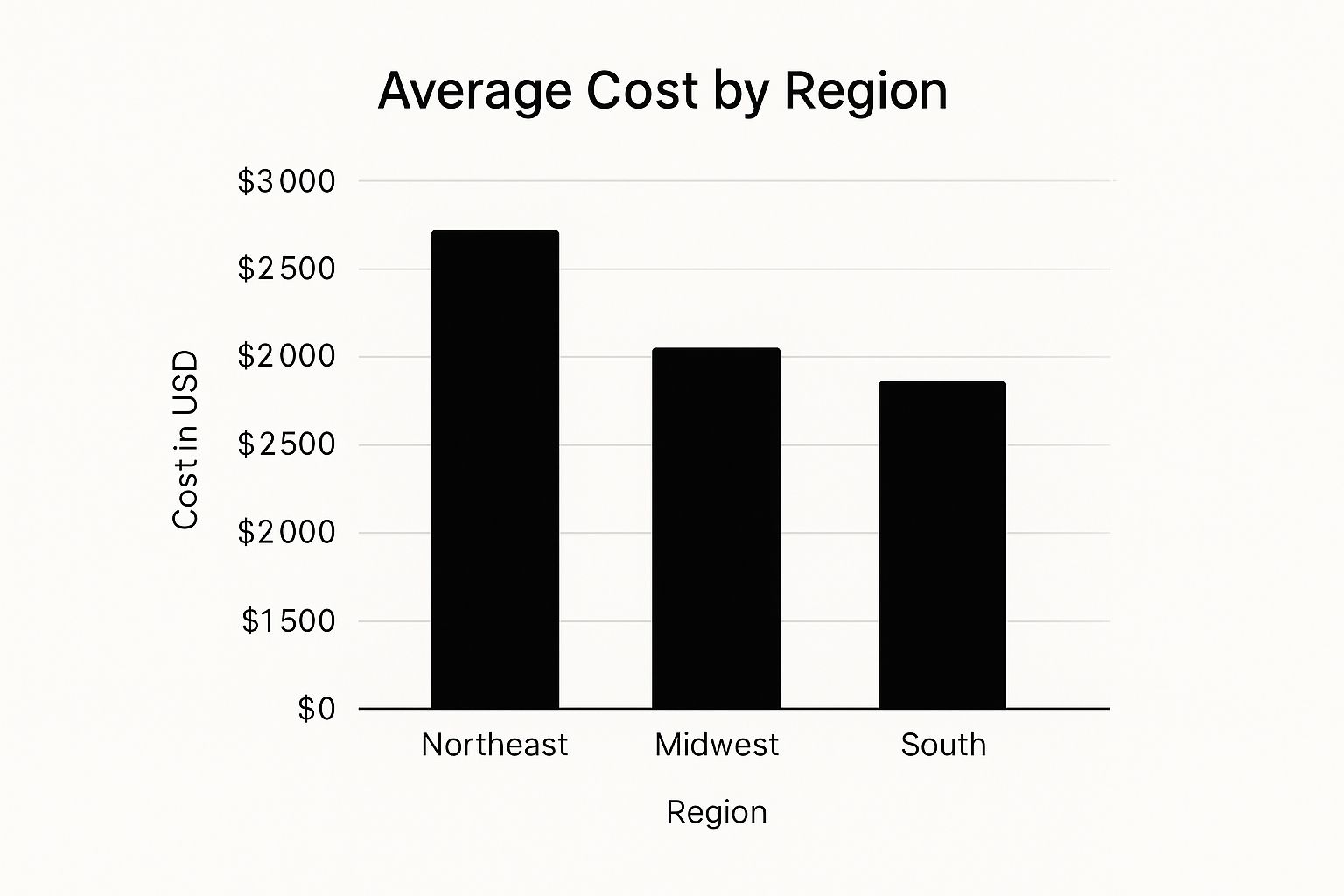
It’s pretty clear from the chart that local labor rates, material costs, and even regional soil conditions can make the final price tag for the same project look very different from one part of the country to another.
The Hidden Dangers of a Cut-Rate Installation
Getting a quote for drainage work that's significantly lower than the others can feel like a win. It's tempting to jump on the cheapest offer, but when it comes to controlling water on your property, a low upfront drainage tile installation cost can be a Trojan horse for much bigger problems. A botched installation isn't just an inconvenience—it can quickly spiral into a destructive, expensive nightmare.
It's a bit like hiring the cheapest mechanic you can find to work on your car's brakes. You might save a few bucks today, but you're gambling with catastrophic failure down the road. A cut-rate drainage job is the same kind of risky bet, with your home's foundation, your carefully planned landscaping, and your peace of mind all on the line.
When "Saving Money" Actually Costs You More
So many low-bid jobs or overly ambitious DIY projects end in failure because they skip the small, critical details that professionals know are non-negotiable. These aren't just minor slip-ups; they're fundamental flaws that all but guarantee the system will fail, usually sooner rather than later.
Here are a few of the most common—and costly—mistakes we see:
- Incorrect Slope: A drain pipe without a consistent, proper slope is just a buried tube. Water just sits in it, turning your yard into a muddy mess and making the whole system completely useless.
- Missing Filter Fabric: Without a quality geotextile wrap, silt, sand, and clay particles will inevitably clog the gravel and pipe. It’s a slow death for the system, leading to a suffocating blockage that can only be fixed by digging everything up again.
- Wrong Materials: Using flimsy, cheap corrugated pipe instead of rigid, durable PVC is a classic shortcut. This stuff gets easily crushed under the weight of the soil or pierced by tree roots, causing a total system collapse.
An improperly installed drainage system doesn't just fail to solve your water problem—it often creates new, more severe ones. Water that should be flowing away can end up pooling right against your foundation, leading to cracks, basement leaks, and thousands in structural repairs.
The reality is, a professional, warrantied installation is more than just a service; it's an insurance policy for your home. You're buying the confidence that the job was done right the first time, protecting your property's value for years to come.
Tackling these issues yourself is a huge undertaking, and it's vital to know what you're getting into to avoid these pitfalls. For a closer look at the right way to approach this, our guide on how to fix yard drainage is a great place to start. Investing in real expertise is the only way to guarantee a permanent solution.
Your Best First Step? Talk to an Expert.
It's probably clear by now that there's no magic, one-size-fits-all number for what a good drainage solution costs. Everything we've covered, from the length of the drain to the kind of soil you're dealing with, plays a role in the final drainage tile installation cost.
That’s exactly why the single most valuable thing you can do is have a professional come out and see the property for themselves.
Think of it this way: you wouldn't let a doctor diagnose you over the phone, right? An online calculator is just a guess. Having an expert walk your property is the only way to truly understand what's going on and design a fix that actually works.
What to Expect From Our Free Consultation
We're not here to give you a high-pressure sales pitch. Our whole approach is built on earning your trust by being upfront and transparent from the get-go. We want to give you a real plan, not just a price tag.
Here’s a quick look at how it works when we visit your home:
- We Listen First: Before we look at anything, we listen to you. You know your property best, so you’ll walk us through the problem areas and tell us what you’ve been experiencing.
- We Diagnose the Real Issue: Our specialists know what to look for. We'll pinpoint the true source of your water problem—whether it’s bad grading, hydrostatic pressure from groundwater, or just heavy surface runoff.
- We Design a Solution Just for You: Based on what we find, we'll map out a drainage system designed to solve your specific issue, making sure it’s both effective and efficient for your budget.
- You Get a Clear, Itemized Quote: No surprises here. We’ll give you a detailed estimate that breaks everything down. We'll walk you through every line item so you know precisely what your investment covers and feel confident in your decision.
Consider this your chance to pick an expert's brain with zero strings attached. It's the first real step toward taking back your yard and protecting your home from water damage for good. It all starts with a simple conversation.
Got Questions About Drainage Costs? We’ve Got Answers.
When you’re thinking about investing in your home, you're bound to have questions. It's a big decision. We get it. Here are some of the most common things homeowners ask us, with straightforward answers to help you feel confident about protecting your property.
How Long Will a New Drainage System Actually Last?
This is probably the number one question we hear, and for good reason. You want to know your investment will stand the test of time.
A professionally installed drainage system is a true long-term solution. When we put in a system using top-tier materials—think rigid PVC pipe and tough, non-woven filter fabric—you can expect it to last for 30 years or more. The real secret to that kind of longevity isn't just the materials, though. It's the expert installation. Getting the slope perfect and properly protecting the system from silt is what makes all the difference.
What About Permits and My Landscaping?
Navigating the world of permits can feel like a headache. Permit requirements really depend on your specific city and county rules. Usually, you'll need one if the system is connecting to city storm sewers or if we’re doing some serious grading work on your property.
But don't stress about the red tape. Our team takes care of the entire permitting process from start to finish. We make sure your project is fully compliant, so you don't have to worry about a thing.
Another big concern for homeowners is, "What's going to happen to my yard?" Yes, excavation is going to disturb the area temporarily—there’s no way around that. But our crews are trained to be surgical. We carefully set aside your sod and topsoil whenever possible. Once the system is installed and tested, we backfill the trench, grade everything properly, and leave your property looking clean and tidy. We can even talk through your options for restoring the landscaping during our consultation.
Your peace of mind is our top priority. We're here to answer every question and provide a transparent, reliable plan that solves your water issues for good, without any surprises along the way.
Ready to get a definitive answer for your property? The experts at Modern Yard Landscapes are here to provide a custom assessment and a clear, no-obligation estimate. Protect your home and reclaim your yard by scheduling your free consultation today at https://modernyardlandscapes.com.
